Blog
Strategies for Staying on Track of Task Dependencies with Kanban23 Jan 2025
Dependencies—tasks that rely on completing other tasks—can quickly become bottlenecks if not properly managed, leading to delays, frustration, and disrupted workflows-which is why dependency management is one of the critical challenges of project management. When working on Kanban boards, refined management of these interconnections is vital to keeping projects moving smoothly.

Kanban Tool, with its robust suite of features such as dedicated task dependencies element, checklists, task cloning, and linking, provides a highly efficient environment for managing interwoven work. Let’s explore how you could leverage these tools and strategies to streamline your project workflows.
1. Visualize dependencies to track relationships
In any project, it is essential to understand which tasks demand other work completion before they can be tackled. Kanban Tool’s Task Dependencies feature allows you to map these relationships visually. When a dependency is established, you can easily see the hierarchy of work and each element's current status and team member assignment.
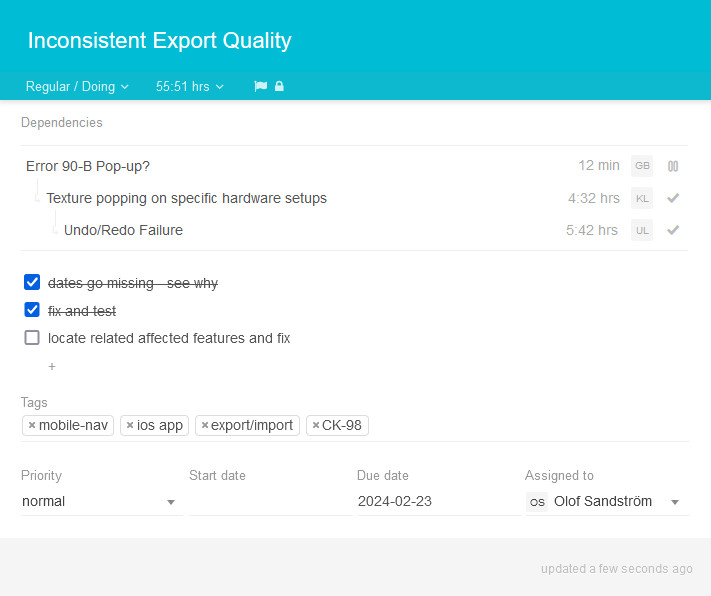
Effective dependency management tips:
- Consider prioritizing dependent tasks: Place tasks with dependencies at the top of the board or assign them higher priority to minimize potential delays.
- Monitor blockers: Stay aware of tasks marked as “blocked” and proactively address showstoppers.
- Communicate clearly: Use tags to categorize tasks and indicate their further connection to other items.
2. Break down tasks with checklists
Large tasks can often be split into multiple sub-steps completed sequentially or in parallel. Kanban Tool’s checklists allow you to create detailed multi-level to-do lists within each task card, ensuring that no step is missed.
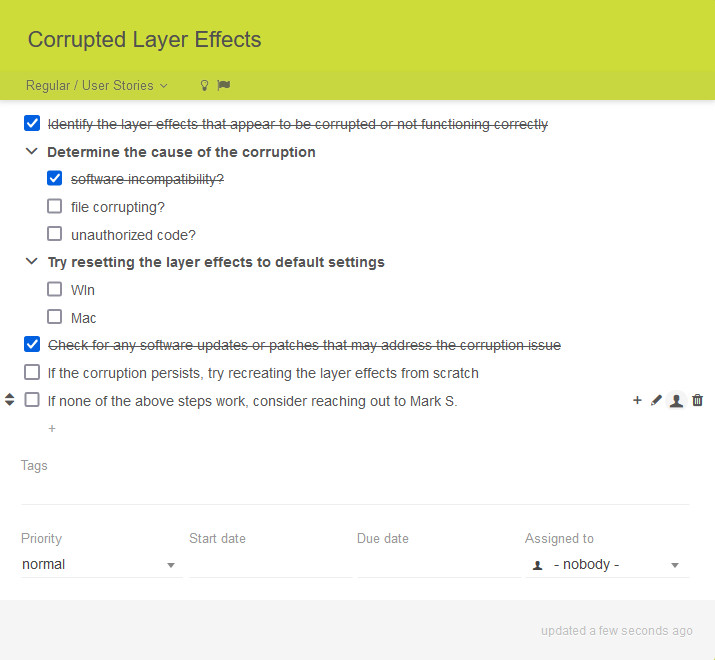
Benefits of using checklists:
- Improved granularity: Breaking down big tasks into manageable subtasks makes for easier tracking, and reduces the intimidation that often comes with complex work elements.
- Parallel progress: Whenever feasible, team members can work on different checklist items simultaneously, accelerating task completion.
- Clear accountability: Assigning specific checklist items to team members lets you monitor their progress and informs all partakers of each item's ownership.
3. Streamline collaboration with direct links
In interconnected projects, tasks often reference other work items or external resources. In Kanban Tool, individual task URL links and board links are invaluable for maintaining context and ensuring seamless collaboration.
Practical links applications:
- Cross-referencing tasks: Use URL links to connect related items across different boards, ensuring team members can access all relevant information with one click.
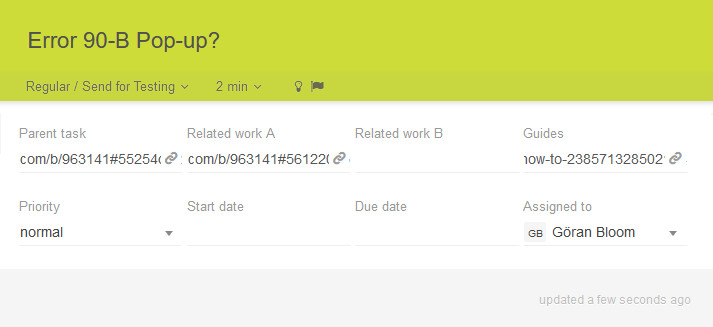
- Pin resource pages for quick access: Save critical project boards, commonly referenced tasks, websites, or external files to a board's Pinboard for one-click access, reducing the time spent searching.
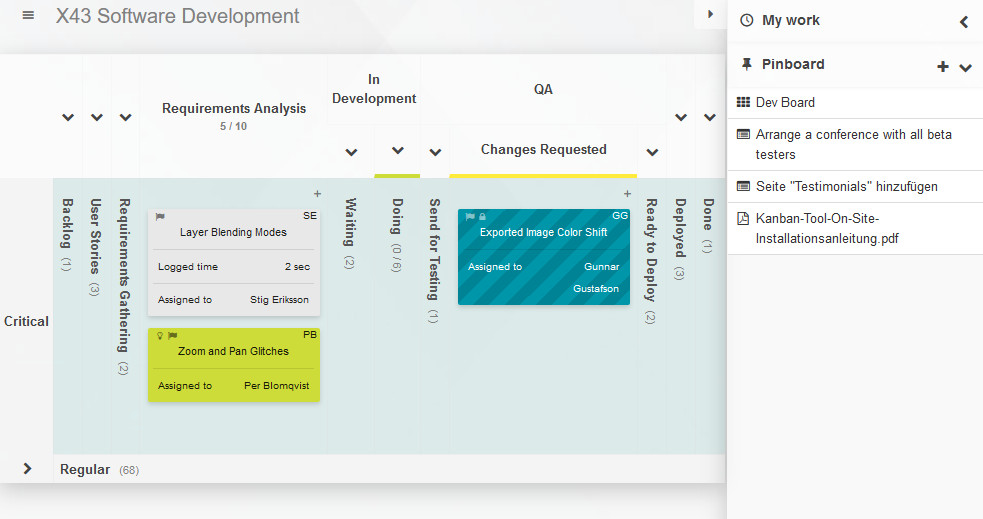
- Task cloning: For tasks that need to be repeated or are similar, use the cloning feature to duplicate an item and preserve its structure and details, or set tasks to be recurring.
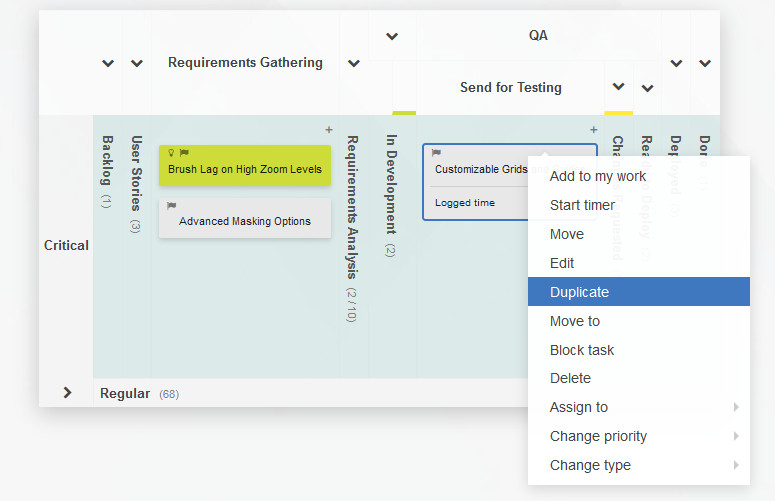
4. Centralize information access with favorite boards and global search
When managing multiple projects at once, it’s easy to lose track of what is where. Kanban Tool’s board navigator lets you star favorite or currently prioritized boards to help maintain focus by centralizing your most important resources. Furthermore, you can use the advanced all-boards search to locate tasks meeting specific criteria.
How to use these features:
- Star the key boards: Add starts to high-priority or currently used boards in the Navigator for quick reference.
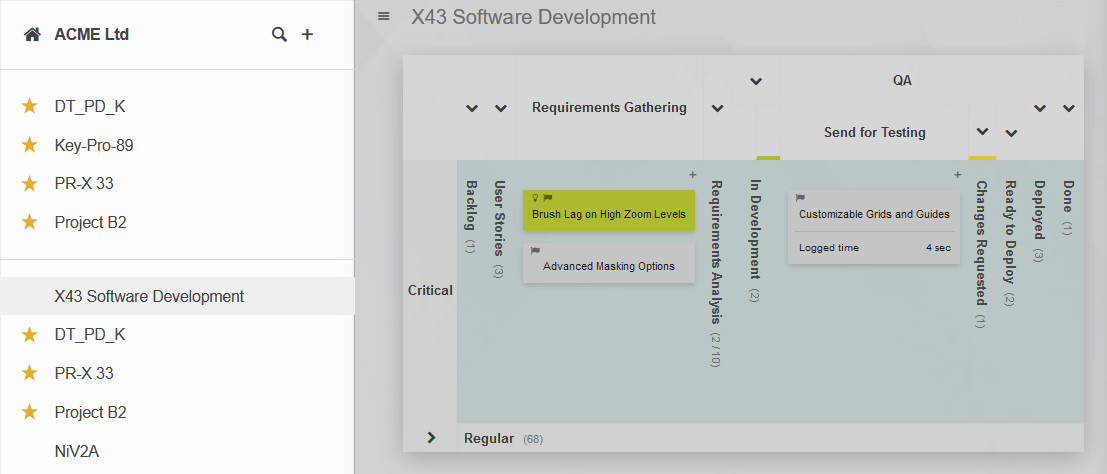
- All-tasks search: Use the search feature to locate tasks with specific tags, due dates, status, team assignments, or last update times to avoid overlooking anything critical.
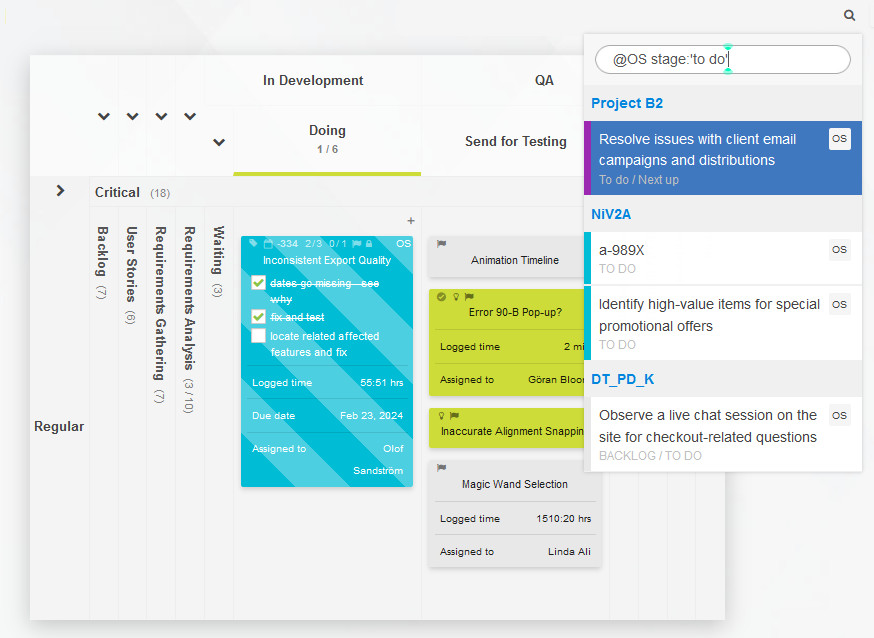
- Tag-based organization: Categorize tasks with tags representing unique elements of your work, for example, a client name, a feature reference, a code, phone numbers, or other personal references, to quickly filter all work and find all tasks related to a given tag.
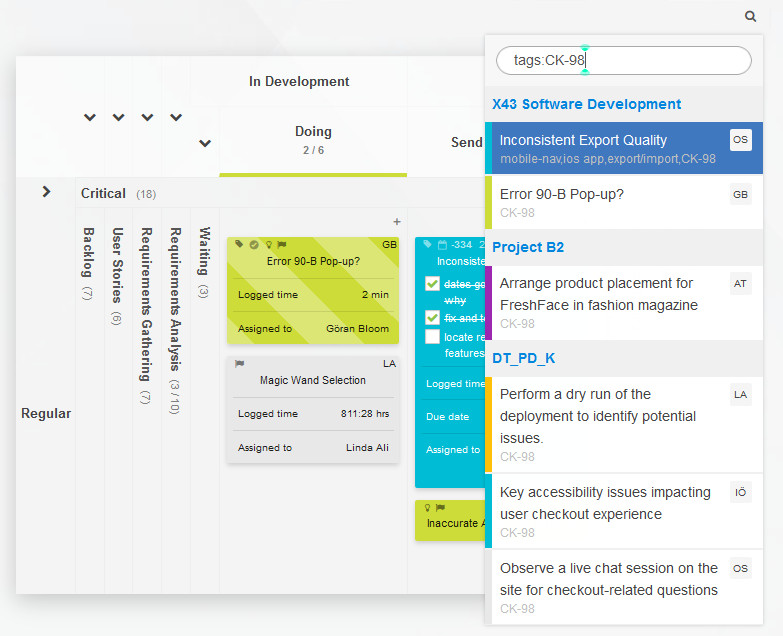
5. Avoid bottlenecks with proactive planning
Even with powerful work-tracking techniques implemented, proactive planning is essential to avoid process impediments. Regularly review your Kanban board to ensure tasks are moving steadily through each stage and dependencies are being addressed promptly and in the correct sequence.
Best practices:
- Daily stand-ups: Use Kanban boards as guides to review the status of tasks and identify any dependency-related delays.
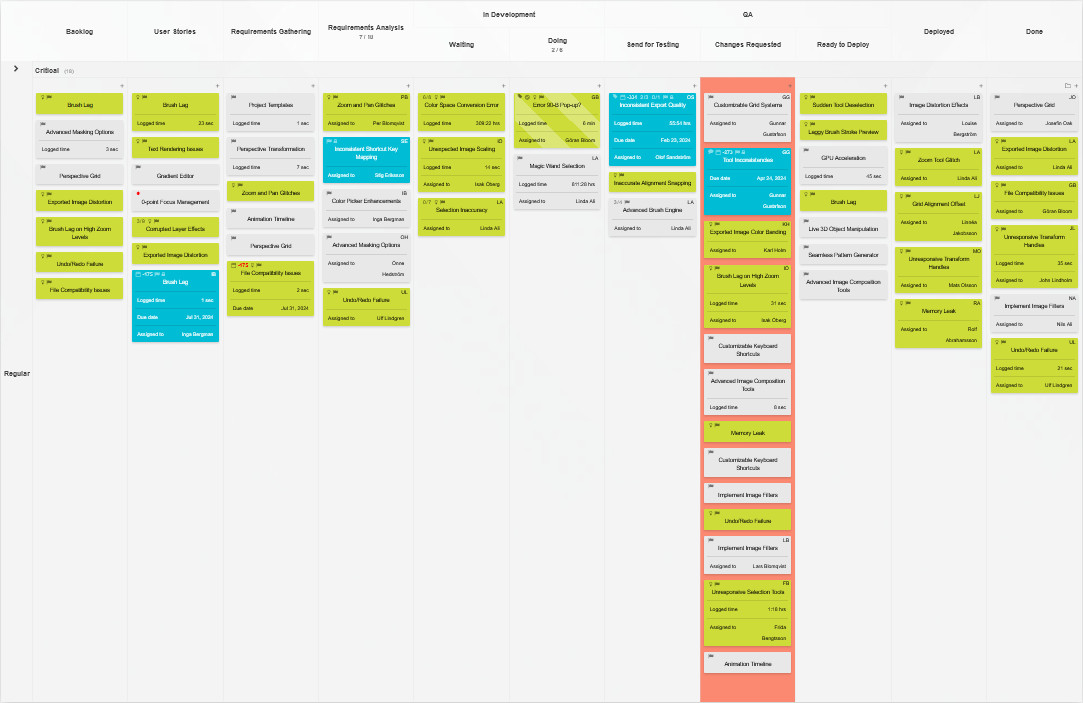
- Buffer zones: Allocate time buffers for tasks with complex dependencies to reduce risk.
- Frequent updates: Encourage team members to update task statuses, checklist progress, and dependency information regularly to keep the entire team in the loop.
Effective dependency management with Kanban boards uses a combination of clear visualization, robust tools, and preemptive planning. By leveraging features like task dependencies, checklists, task links, or global search, teams can stay on track, minimize delays, and ensure smoother project workflows. With these strategies in place, you’ll be well-equipped to tackle even the most interconnected projects with confidence!

Sign up for a 14-day free trial
to test all the features.
Sign up now and see how we can help
your organization deliver exceptional results.